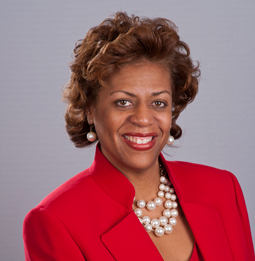Decades of research has shown that growing up in concentrated poverty can irreversibly limit a child’s prospects for future success and, sadly, no region has more concentrated poverty than metro Detroit.
According to 2016 Brookings Institution report, metro Detroit has the highest rate of concentrated poverty among the top 25 metro areas in the U.S. with 32 percent of poor people in the region’s six counties living in Census tracts where at least 40% of the population is below the federal poverty line.
It matters because there is overwhelming evidence that the longer a child lives in a neighborhood and attends schools with concentrated poverty, the harder it is for him or her to climb out of poverty. A 2015 study by Harvard researchers Raj Chetty and Nathaniel Hendren showed that the earlier a child moves to a upwardly mobile community, the more his or her future income prospects improves:
For children growing up in families at the 25th percentile of the income distribution, each year of childhood exposure to a one standard deviation (SD) better county increases income in adulthood by 0.5%. Hence, growing up in a one SD better county from birth increases a child’s income by approximately 10%.
That’s why I’m excited about a proposed ordinance from Detroit City Council member Mary Sheffield (District 5) that would strengthen efforts to give low income renters access to publicly-financed housing developments. Sheffield’s ordinance would force developers to rent 20 percent of their units to residents who earn 80% of the Area Median Income for at least 30 years. Landlords who don’t comply with the mandate will pay penalties that will fund the Detroit Affordable Housing and Development Preservation Fund, which will support housing for Detroit’s poorest citizens.
In a recent interview with WDET reporter Bre’Anna Tinsley, Sheffield said her ordinance is aimed at preventing gentrification while giving low income residents exposure to economically diverse environments.
“Communities are stronger and more vibrant when there are mixed incomes a variety of incomes within different developments. I think it’s important that as we rebuild Detroit that it’s inclusive of everyone. I do understand that certain developments should be all market rate but in those particular developments, I don’t believe they should request public assistance.”
I live near downtown Detroit in a solidly middle class neighborhood that is bordered by the same blight and abandonment that surrounds many city districts. In the past year alone, two new upscale rental communities have been built within a mile of my home. I’m happy to see the developments and hopeful that with my new neighbors will bring more retail options and improved services to our community. But like many Detroiters, I fear that neighborhoods like mine will be overwhelmed by gentrification that will lock out citizens who have weathered Detroit’s hardest times. Proposals like Sheffield’s will go a long way toward helping city officials center Detroit’s housing policies on efforts that preserve and create economic diversity







